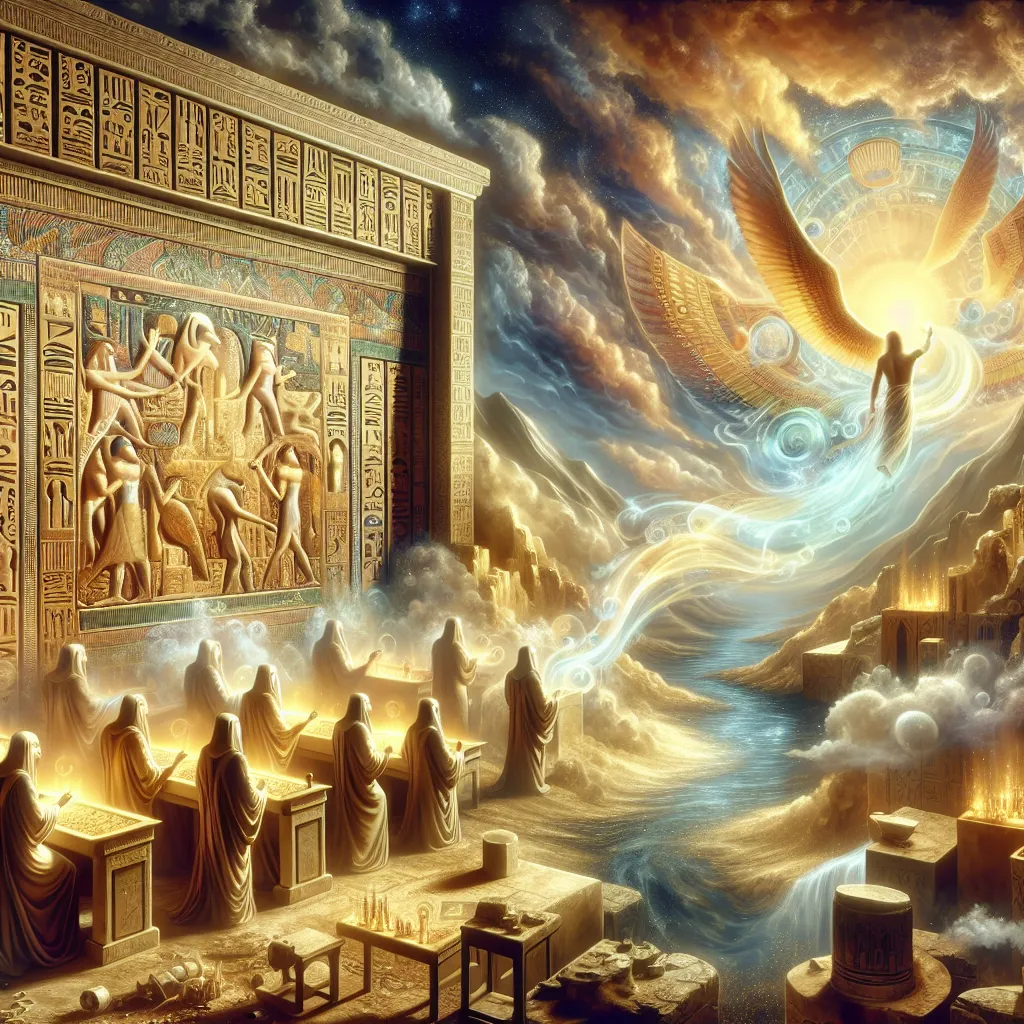
- Published on
- Authors

- Name
- You
The Breath of Horus: Vision and Clarity in Egyptian Practices
Introduction
In the intricate tapestry of Egyptian mythology, Horus, the falcon-headed god, stands as a symbol of vision, protection, and kingship. Ancient Egyptians revered him not only for his mythological battles and victories but also for the deeper spiritual wisdom he provided. Central to Horus's teachings is the concept of the breath, a life force that transcends mere physical existence and connects mortals with the divine realms.
The Multifaceted Role of Horus
God of Vision and Kingship
Horus, son of Isis and Osiris, is often depicted with the head of a falcon, embodying the unmatched clarity and vision of these majestic birds. As the god of the sky, his right eye represented the sun, and his left eye represented the moon. This dual representation symbolizes balance and the omnipresent gaze of divinity over all creation.
| Attributes of Horus | Symbolism |
|---|---|
| Falcon Head | Vision and Keenness |
| Right Eye (Sun) | Light, Consciousness, Day |
| Left Eye (Moon) | Intuition, Subconscious, Night |
| Protector of Pharaohs | Royal Power and Authority |
| Avenger of Osiris | Justice and Retribution |
Breath: The Divine Connection
Sacred Breath in Egyptian Practices
The practice of breath as a spiritual exercise can be traced back to the ancient temples along the Nile. For the priests and priestesses, mastering the breath was essential for achieving higher states of consciousness and accessing divine wisdom. The ancient texts suggest specific techniques that were employed to invoke the spirit of Horus within:
Breath of Horus Technique
- Preparation: Sit in a sacred space, preferably facing east where the sun rises, symbolizing new beginnings.
- Inhalation: Inhale deeply through the nose, filling the lungs completely and holding the breath briefly.
- Invocation: Visualize the Eye of Horus, feeling its protective gaze upon you. Chant silently or out loud: "Horus, grant me vision and clarity."
- Exhalation: Release the breath slowly through the mouth, visualizing any negativity leaving the body.
- Repetition: Perform this cycle at least seven times, aligning with the seven domains of life (physical, emotional, intellectual, social, spiritual, financial, and ecological).
Advanced Scientific Perspectives
The Physiology of Breath
Modern science provides insight into the physiological benefits of controlled breathing. Researchers have detailed how deep, rhythmic breathing can:
- Activate the Parasympathetic Nervous System: Reducing stress and promoting relaxation.
- Increase Oxygen Flow: Enhancing cognitive function and mental clarity.
- Balance the Autonomic Nervous System: Improving emotional regulation and resilience.
Breathwork and Brain Function
Studies using functional MRI scans have shown that specific patterns of breathwork can significantly affect brain activity, increasing connectivity in areas associated with awareness, focus, and emotional regulation. This modern understanding complements the ancient belief that breath is a bridge between the mundane and the divine.
Conclusion
The teachings of Horus, particularly through the practice of sacred breath, offer timeless wisdom that intertwines mystical traditions with tangible physiological benefits. This blend of ancient practice and modern science enriches our understanding and application of breathwork, making the ancient Egyptian pursuit of vision and higher awareness accessible to contemporary seekers.
Embrace the wisdom of Horus, breathe deeply, and allow clarity and vision to illuminate your path.
